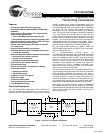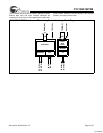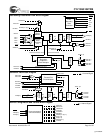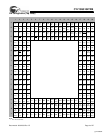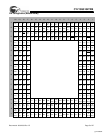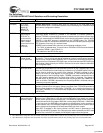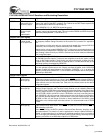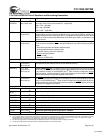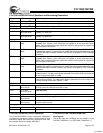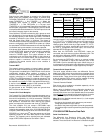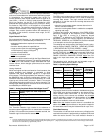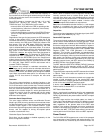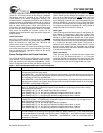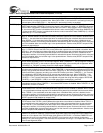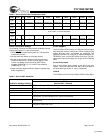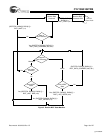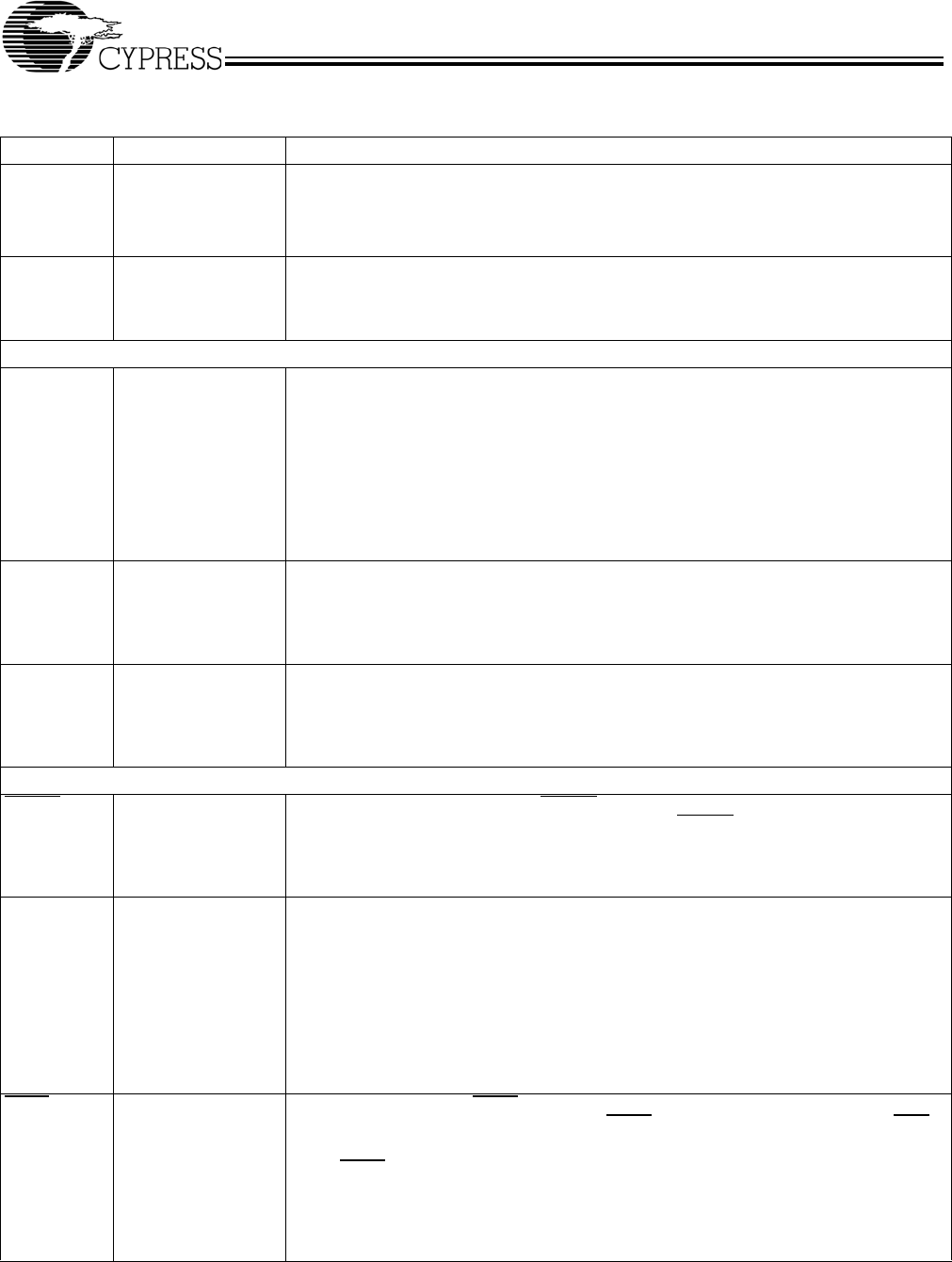
CYV15G0104TRB
Document #: 38-02100 Rev. *B Page 7 of 27
BISTSTA LVTTL Output,
synchronous to the
RXCLKA ± output
BIST Status Output. When RXBISTA[1:0] = 10, BISTSTA (along with RXDA[1:0])
displays the status of the BIST reception. See Table 6 for the BIST status reported for
each combination of BISTSTA and RXDA[1:0].
When RXBISTA[1:0] ≠ 10, BISTSTA should be ignored.
REPDOA Asynchronous to
reclocker output
channel
enable/disable
Reclocker Powered Down Status Output. REPDOA is asserted HIGH, when the
reclocker output logic is powered down. This occurs when ROE2A and ROE1A are both
disabled by setting ROE2A = 0 and ROE1A = 0.
Receive Path Clock Signals
TRGCLKA± Differential LVPECL
or single-ended
LVTTL input clock
CDR PLL Training Clock. TRGCLKA± clock inputs are used as the reference source for
the frequency detector (Range Controller) of the receive PLL to reduce PLL acquisition
time.
In the presence of valid serial data, the recovered clock output of the receive CDR PLL
(RXCLKA±) has no frequency or phase relationship with TRGCLKA±.
When driven by a single-ended LVCMOS or LVTTL clock source, connect the clock source
to either the true or complement TRGCLKA input, and leave the alternate TRGCLKA input
open (floating). When driven by an LVPECL clock source, the clock must be a differential
clock, using both inputs.
RXCLKA± LVTTL Output Clock Receive Clock Output. RXCLKA± is the receive interface clock used to control timing of
the RXDA[9:0] parallel outputs. These true and complement clocks are used to control
timing of data output transfers. These clocks are output continuously at either the half-
character rate (1/20
th
the serial bit-rate) or character rate (1/10
th
the serial bit-rate) of the
data being received, as selected by RXRATEA.
RECLKOA LVTTL Output Reclocker Clock Output. RECLKOA output clock is synthesized by the reclocker output
PLL and operates synchronous to the internal recovered character clock. RECLKOA
operates at either the same frequency as RXCLKA± (RXRATEA = 0), or at twice the
frequency of RXCLKA± (RXRATEA = 1).The reclocker clock outputs have no fixed phase
relationship to RXCLKA±.
Device Control Signals
RESET
LVTTL Input,
asynchronous,
internal pull-up
Asynchronous Device Reset. RESET
initializes all state machines, counters, and
configuration latches in the device to a known state. RESET
must be asserted LOW for a
minimum pulse width. When the reset is removed, all state machines, counters and config-
uration latches are at an initial state. See Table 4 for the initialize values of the device
configuration latches.
LDTDEN LVTTL Input,
internal pull-up
Level Detect Transition Density Enable. When LDTDEN is HIGH, the Signal Level
Detector, Range Controller, and Transition Density Detector are all enabled to determine
if the RXPLL tracks TRGCLKA± or the selected input serial data stream. If the Signal Level
Detector, Range Controller, or Transition Density Detector are out of their respective limits
while LDTDEN is HIGH, the RXPLL locks to TRGCLKA± until such a time they become
valid. SDASEL[2..1]A[1:0] is used to configure the trip level of the Signal Level Detector.
The Transition Density Detector limit is one transition in every 60 consecutive bits. When
LDTDEN is LOW, only the Range Controller is used to determine if the RXPLL tracks
TRGCLKA± or the selected input serial data stream. it is recommended to set LDTDEN
= HIGH.
ULCA
LVTTL Input,
internal pull-up
Use Local Clock. When ULCA is LOW, the RXPLL is forced to lock to TRGCLKA± instead
of the received serial data stream. While ULCA
is LOW, the link fault indicator LFIA is
LOW indicating a link fault.
When ULCA
is HIGH, the RXPLL performs Clock and Data Recovery functions on the
input data streams. This function is used in applications in which a stable RXCLKA± is
needed. In cases when there is an absence of valid data transitions for a long period of
time, or the high-gain differential serial inputs (INA±) are left floating, there may be brief
frequency excursions of the RXCLKA± outputs from TRGCLKA±.
Pin Definitions (continued)
CYV15G0104TRB HOTLink II Serializer and Reclocking Deserializer
Name I/O Characteristics Signal Description
[+] Feedback



